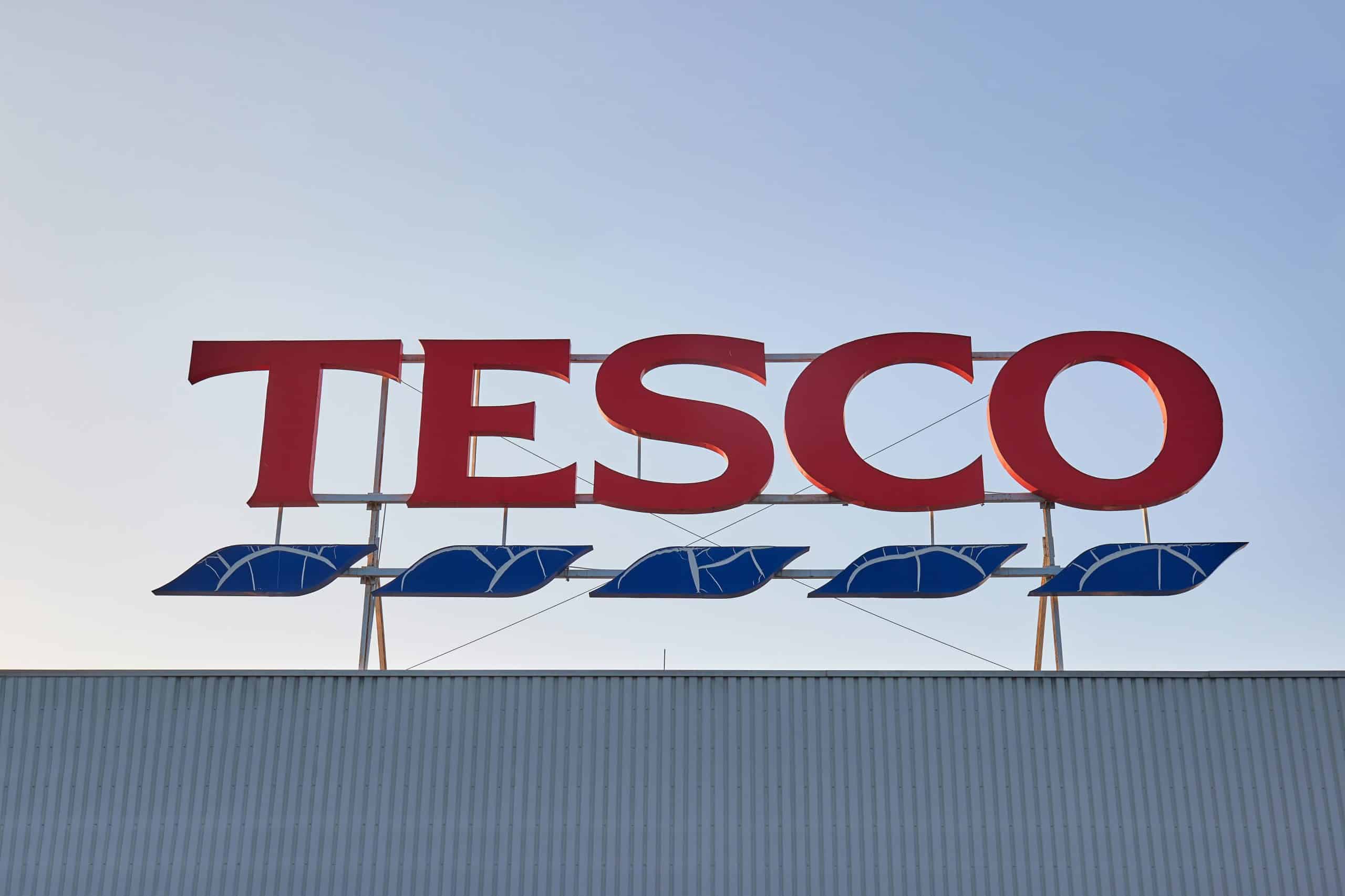The British supermarket sector has always attracted keen attention from both retail and institutional investors. For over a century, names like Tesco and Sainsbury’s have dominated the UK high street and shaped the evolution of British consumer culture. However, when examining the long-term total return performance of these two retail giants, the divergence is staggering. A 30-year comparative analysis reveals that Tesco PLC has returned 852.6% (an annualized 7.8% CAGR), while J Sainsbury plc has returned just 131.7% (a 2.8% CAGR) to its shareholders over the same period. The difference is not merely a function of scale or market timing, but reflects underlying strategic execution, capital allocation, operational resilience, and the broader shifts within the UK grocery and consumer landscape.
Quantitative Analysis: Three Decades, Two Trajectories
The visualized performance chart, spanning from the mid-1990s to 2025, shows a dramatic divergence in wealth creation between Tesco and Sainsbury’s. Tesco’s total return line surges from near parity in the 1990s to a peak above 850% by 2025. Its performance was not linear, showing substantial volatility — especially during the early 2000s expansion, the financial crisis, and a challenging period post-2012. However, the most striking feature is the acceleration from 2020 onward, when Tesco’s shares began a steep upward trajectory, breaking previous highs and compounding sharply in the last several years.
In contrast, Sainsbury’s displays a far flatter growth curve, rarely breaking above 100% total return until the late 2010s and only reaching 131.7% by 2025. Periods of relative strength, such as the early 2000s and around the 2008 financial crisis, gave way to long stretches of stagnation. The chart’s compounding effect underscores how even moderate differences in annual returns, when compounded over 30 years, can create a massive gap in terminal wealth for long-term investors.
Operational Drivers and Business Model Differences
Tesco’s outperformance cannot be attributed to luck alone. Throughout the late 1990s and 2000s, Tesco aggressively expanded both in the UK and abroad, pioneering the hypermarket model, launching innovative private label brands, and investing heavily in supply chain optimization. The company’s “Every Little Helps” ethos, backed by robust logistics and advanced use of data analytics, enabled it to capture a growing share of both premium and value-conscious shoppers.
Moreover, Tesco’s foray into convenience stores, banking (Tesco Bank), and early online grocery positioned it as an omnichannel leader well before many peers. Its scale enabled it to negotiate better terms with suppliers and drive efficiencies that supported higher margins, especially compared to more traditional, slower-moving competitors.
Sainsbury’s, while highly respected for its quality and heritage, was slower to adapt. Its focus on traditional large-format stores and a more cautious approach to international expansion limited its ability to keep pace with changing consumer habits. Although Sainsbury’s made important acquisitions (notably Argos in 2016) and invested in digital capabilities, these moves came relatively late. The business often lagged in responding to discounter competition, shifts to convenience, and the rapid rise of online shopping accelerated by the pandemic.
The Impact of Market Disruption and Consumer Trends
The last three decades have seen profound changes in UK retail, marked by the arrival of discounters like Aldi and Lidl, the digital revolution, and evolving consumer expectations. Tesco, with its dominant market share, was often better able to weather these storms. For example, its Clubcard loyalty program gave it direct access to customer data, allowing for targeted promotions and improved inventory management long before data-driven retail became the norm.
Sainsbury’s, conversely, struggled with margin pressure and customer churn in the face of new entrants. While it invested in its Nectar loyalty program and sought partnerships (such as with Deliveroo for rapid delivery), the results were incremental rather than transformative. The inability to pivot rapidly to emerging retail formats, such as express stores and robust e-commerce logistics, meant Sainsbury’s often played catch-up during crucial growth periods.
Management, Strategy, and Capital Allocation
Tesco’s management teams, particularly under Sir Terry Leahy, displayed a willingness to make bold strategic bets. International expansion, innovative store formats, and disciplined capital returns via dividends and buybacks bolstered shareholder value over decades. Even after a governance and accounting crisis in 2014–2015, Tesco rebounded with a renewed focus on core operations, cost control, and digital investment, which set the stage for its post-pandemic surge.
Sainsbury’s management, while competent and occasionally innovative, often faced a more complex set of constraints, including a relatively conservative board, a higher focus on margin than volume, and greater exposure to urban real estate costs. Sainsbury’s has maintained a strong brand and loyal customer base but has struggled to produce the type of breakout growth and operating leverage that drives long-term share price appreciation.
Recent Catalysts: Pandemic, Cost-of-Living Crisis, and Resilience
The period from 2020 onwards magnified existing trends. Tesco’s superior scale, online infrastructure, and supply chain flexibility allowed it to benefit disproportionately during the COVID-19 lockdowns. As UK consumers shifted rapidly to online grocery delivery and local shopping, Tesco was positioned to capture both. Government support, resilient profit margins, and a quick pivot to contactless retail accelerated the share price rally evident on the chart’s far right.
Sainsbury’s, by comparison, saw a more muted benefit. Its online business grew but lacked the depth and reach of Tesco’s network. Additionally, Sainsbury’s faced greater margin pressure from energy and labor costs during the UK’s cost-of-living crisis, limiting its ability to pass on price increases without eroding customer loyalty. While both companies endured supply chain disruptions and input cost inflation, Tesco’s broader reach and diversified operations proved more adaptable.
Dividend Policy and Shareholder Returns
An important dimension of long-term performance is the role of dividends. Tesco has consistently paid and, in recent years, raised its dividend, which compounded total shareholder returns. Sainsbury’s, though also a dividend payer, was forced to pause or reduce payments during tougher periods, further dampening compounding effects. The power of reinvested dividends is evident in Tesco’s performance line, as steady income returns can dramatically magnify final wealth when compared to low or inconsistent dividend histories.
Strategic Outlook and the Future of UK Grocery Competition
Looking forward, Tesco appears to maintain its lead, capitalizing on data-driven personalization, vertical integration, and ongoing digital innovation. The company’s continued investment in rapid delivery, loyalty programs, and supply chain modernization sets it up to defend market share even as new threats emerge — from online-only grocers to further discount competition.
Sainsbury’s faces a more challenging path. Its strategic focus is now on improving operational efficiency, leveraging its Argos integration, and deepening partnerships in logistics and digital channels. Whether these initiatives will be enough to close the performance gap with Tesco is uncertain. The next decade will likely test the limits of both companies’ adaptability as UK grocery retail enters a new era of AI-driven optimization, sustainability imperatives, and consumer empowerment.
Comparison, examination, and analysis between investment houses
Leave your details, and an expert from our team will get back to you as soon as possible
* This article, in whole or in part, does not contain any promise of investment returns, nor does it constitute professional advice to make investments in any particular field.
To read more about the full disclaimer, click here- Articles
- •
- 10 Min Read
- •
- ago 26 minutes
 TESLA’S JULY CHINA-MADE EV SALES FALL 8.4%
TESLA’S JULY CHINA-MADE EV SALES FALL 8.4%
Analyzing the Impact of Tesla's Decline in China Tesla's latest report on its China-made electric vehicle (EV) sales shows an
- ago 26 minutes
- •
- 10 Min Read
Analyzing the Impact of Tesla's Decline in China Tesla's latest report on its China-made electric vehicle (EV) sales shows an
- Articles
- •
- 8 Min Read
- •
- ago 51 minutes
 CORE SCIENTIFIC’S SHAREHOLDERS BALK AT TERMS OF COREWEAVE MERGER OFFER, FT REPORTS
CORE SCIENTIFIC’S SHAREHOLDERS BALK AT TERMS OF COREWEAVE MERGER OFFER, FT REPORTS
Core Scientific Shareholders Express Concerns Over CoreWeave Merger Terms Overview Recent reports indicate growing discontent among Core Scientific shareholders regarding
- ago 51 minutes
- •
- 8 Min Read
Core Scientific Shareholders Express Concerns Over CoreWeave Merger Terms Overview Recent reports indicate growing discontent among Core Scientific shareholders regarding
- Articles
- •
- 10 Min Read
- •
- ago 1 hour
 STARTUP ANDURIL BECOMES THIRD U.S. SRM SUPPLIER AMID RISING DEFENSE DEMAND
STARTUP ANDURIL BECOMES THIRD U.S. SRM SUPPLIER AMID RISING DEFENSE DEMAND
The Rise of Anduril: Becoming a Strategic Force in U.S. Defense The defense industry is undergoing a significant transformation, driven
- ago 1 hour
- •
- 10 Min Read
The Rise of Anduril: Becoming a Strategic Force in U.S. Defense The defense industry is undergoing a significant transformation, driven
- Arik Arkadi Sluzki
- •
- 11 Min Read
- •
- ago 1 hour
 CHINA’S ANT GROUP TO EXIT INDIA’S PAYTM, CNBC-TV18 REPORTS
CHINA’S ANT GROUP TO EXIT INDIA’S PAYTM, CNBC-TV18 REPORTS
China's Ant Group to Exit India’s Paytm, CNBC-TV18 Reports The Implications of Ant Group’s Exit: What It Means for the
- ago 1 hour
- •
- 11 Min Read
China's Ant Group to Exit India’s Paytm, CNBC-TV18 Reports The Implications of Ant Group’s Exit: What It Means for the












